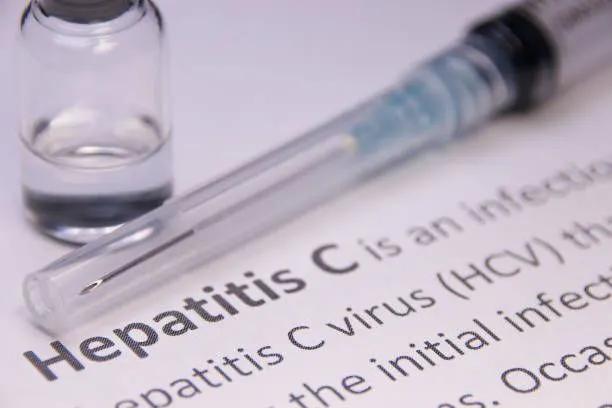Flowchart of the study population of PWUD and results of the diagnostic tests, Madrid, Spain, 1 June 2017–3 April 2023
Image Credits: Eurosurveillance

Hepatitis C (HCV) is prevalent among people who use drugs, placing them at significant risk of developing liver cirrhosis, which can progress to liver decompensation, hepatocellular carcinoma, and death. A study from Spain reveals a decline in HCV infection rates among people who use drugs (PWUD), suggesting that targeted screening programs are advancing the World Health Organization’s (WHO) goal of HCV elimination by 2030. Although, the ongoing high infection rates among injecting drug users highlight the need for additional interventions.1
The findings confirm that injecting drug use is the leading risk factor for active HCV infection. The rate of active HCV infection among people who use drugs at the mobile screening unit declined significantly from 23.4% in 2017 to 6% in 2023, indicating the effectiveness of current prevention and treatment strategies. The study aimed to identify the main risk factors for HCV infection and examine how prevalence has changed from 2017 to 2023. To do this, a mobile screening unit was used in Madrid to assess HCV prevalence among people who use drugs.1
“Our study found a prevalence of active HCV infection of 6% in the entire population of PWUD and 15% in people who inject drugs (PWID) in 2023, which supposes a significant reduction from the initial prevalence recorded in 2017–18, which was 23.4% and 41%, respectively,” investigators explained, “It should be noted that despite these significant reductions, the HCV prevalence of active HCV infection in PWUD and PWID remains nearly 30 and 70 times higher, respectively, than the estimated prevalence of active HCV infection in the general population in Spain (.2%).”
3 Key Takeaways
- HCV infection rates among PWUD have significantly decreased from 23.4% in 2017 to 6% in 2023, reflecting the effectiveness of targeted screening programs.
- High infection rates persist among injecting drug users, with a 15% prevalence in 2023, indicating the need for additional interventions.
- The HERO study found that PWID often overreport their adherence to HCV treatment, with self-reported adherence averaging 19.2% higher than objectively measured adherence.
PWID have a history of reinfection. The HERO (Hepatitis C Real Options) study found that these individuals often report higher adherence to direct-acting antiviral therapy for HCV treatment compared to objectively measured adherence. On average, self-reported adherence was 19.2% higher than what was objectively measured. A discrepancy of more than 25% between self-reported and objectively measured adherence was linked to lower sustained virologic response rates.2
“The WHO has set ambitious targets to eliminate HCV as a public health threat by 2030. However, some models suggest that only 24% of high-income countries are on track to achieve this goal, considering their current indicators for diagnosis and treatment . While some studies have reported a global decrease in HCV cases from 2015 to 2020, ca 56.8 million viraemic infections were still estimated as of 1 January 2020, with only 22.7% (12.9 million) being diagnosed.”1
According to the WHO’s most recent report on challenges and progress in hepatitis worldwide, nearly 1 million new cases of hepatitis C were reported in 2022. Despite the availability of effective prevention, diagnosis, and treatment tools, the estimated number of deaths from viral hepatitis rose from 1.1 million in 2019 to 1.3 million in 2022.3
The study has key limitations, potential selection bias, as some PWUD may not have participated due to the lack of financial incentives while others did to obtain a diagnosis, possible bias or incompleteness in risk behavior data despite trained personnel collecting it, and limited generalizability since the study was conducted in a high-income country.1
While significant reductions in HCV infection rates among PWUD have significantly decreased, but remain high compared to the general population. Ongoing efforts and enhanced interventions are necessary to reduce infection rates further and meet global elimination goals.
References
-
Ryan P, Valencia J, Cuevas G, et. al. Decrease in active hepatitis C infection among people who use drugs in Madrid, Spain, 2017 to 2023: a retrospective study. Eurosurveillance. Published July 18, 2024. Accessed July 29, 2024. Doi: 10.2807/1560-7917.ES.2024.29.29.2300712
-
Lopes S, Pericot-Valverde I, Lum P, Taylor L, Mehta S, et. Al. Overreporting of Adherence to Hepatitis C Direct-Acting Antiviral Therapy and Sustained Virologic Response Among People Who Inject Drugs in the HERO Study. BMC Infectious Diseases. Published February 23, 2024. Accessed July 29, 2024. https://doi.org/10.1186/s12879-024-09124-3
-
WHO. New report flags major increase in sexually transmitted infections, amidst challenges in HIV and hepatitis. Published May 21, 2024. Accessed July 29, 2024. https://www.who.int/news/item/21-05-2024-new-report-flags-major-increase-in-sexually-transmitted-infections—amidst-challenges-in-hiv-and-hepatitis








